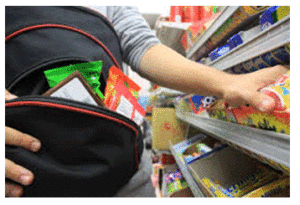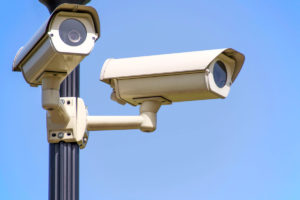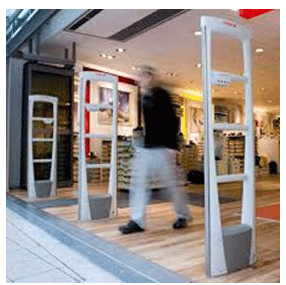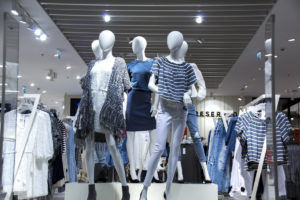 According to the National Association for Shoplifting Prevention-NASP-there are 27 million people that shoplift in the United States today. That is 1 in 11 people, and 75% of those people are adults. Women shoplift as much as men, and in case you were getting ready to profile an individual, there is no such thing as a profile of a typical shoplifter.
According to the National Association for Shoplifting Prevention-NASP-there are 27 million people that shoplift in the United States today. That is 1 in 11 people, and 75% of those people are adults. Women shoplift as much as men, and in case you were getting ready to profile an individual, there is no such thing as a profile of a typical shoplifter.
The busiest shopping season has passed, and if you haven’t taken inventory or are in the process of conducting one, you will realized the losses you suffered. For many stores across the country, the holiday season is the busiest season for sales and hopefully profits, but is also the busiest time for shoplifters. One will hope that shoplifting stops when the holiday season ends, but as always, shoplifting is a year long crime that never ends.
What is there to do then? Vigilance and preparation can help you prevent some of the shoplifting that happens at your store.
Did you know that good customer service can help you prevent some of the shoplifting at your store?
- Greet every customer that enters your store and ask them if they need any help
- Place high value items behind registers or locked up. If they want the item, they need to have a person helping them unlock it.
- Have visible signs alerting the customer you will prosecute in case of shoplifting.
- Make the promise of prosecuting true. Believe it or not, shoplifters know which stores are easy target. Which stores have poor security, and which stores cannot really prosecute the shoplifter.
- If you check social media platforms, you will realize that there are groups of individuals that ask advice about which store they should target. The help from other shoplifters is amazing, but you can learn whether your store is targeted and how they go about it.
Prevention, trained personnel, and clear policies and procedures can help your store and profits stay afloat. The policies and procedures from store to store will change, but the underlying goal is the same. Prevent losses or at least minimize the amount your store losses to shoplifting and employee theft by having clear goals and exceptionally well trained employees.

 How did your retail business do in 2016? Face it, regardless of how well you did or did not do, you could have done much better. The key is to keep your cash, assets and merchandise on YOUR bottom line not someone else’s. Thieves take the money you could have had away, easily in some cases.
How did your retail business do in 2016? Face it, regardless of how well you did or did not do, you could have done much better. The key is to keep your cash, assets and merchandise on YOUR bottom line not someone else’s. Thieves take the money you could have had away, easily in some cases.
 If you were asked what area of your store would present the most opportunity for employee theft and fraud, what would you answer? The checkout lanes where cashiers have access to the register, the ability to pass merchandise,
If you were asked what area of your store would present the most opportunity for employee theft and fraud, what would you answer? The checkout lanes where cashiers have access to the register, the ability to pass merchandise,
 drawer. IF someone reaches towards the drawer the register should be shut. Registers should be closed immediately following a transaction. If a cashier is sorting through the money or “straightening” they could be slipping money out and pocketing it or dropping money, then putting it in their pocket. Don’t “exchange” bills for patrons, there are some shoplifters who also engage in short changing and confusing cashiers and steal money using this method. Others will argue they did not get the right amount of change and start reaching in the till. If there is a dispute over change a manager needs to conduct a till audit with a partner, in the cash office. If there are enough registers in the store, limit one cashier to one register, when the cashier is done for the day, their money goes in their bag with a supervisor present and the supervisor drops it in the cash cart and rolls it to the cash office. Keep large bills under the till, if they are on top they are easy to see and easier for a grab and run. Consider purchasing locking till covers for registers that have money in them but are not currently in use. There are traveling shoplifting rings and till tap rings that have register keys and will open drawers if no one is paying attention. Till covers prevent someone from getting to the cash even if they open the drawer. Finally, when a register has too many large bills or excessive amounts of money, do a skim and take the excess to the cash office.
drawer. IF someone reaches towards the drawer the register should be shut. Registers should be closed immediately following a transaction. If a cashier is sorting through the money or “straightening” they could be slipping money out and pocketing it or dropping money, then putting it in their pocket. Don’t “exchange” bills for patrons, there are some shoplifters who also engage in short changing and confusing cashiers and steal money using this method. Others will argue they did not get the right amount of change and start reaching in the till. If there is a dispute over change a manager needs to conduct a till audit with a partner, in the cash office. If there are enough registers in the store, limit one cashier to one register, when the cashier is done for the day, their money goes in their bag with a supervisor present and the supervisor drops it in the cash cart and rolls it to the cash office. Keep large bills under the till, if they are on top they are easy to see and easier for a grab and run. Consider purchasing locking till covers for registers that have money in them but are not currently in use. There are traveling shoplifting rings and till tap rings that have register keys and will open drawers if no one is paying attention. Till covers prevent someone from getting to the cash even if they open the drawer. Finally, when a register has too many large bills or excessive amounts of money, do a skim and take the excess to the cash office.

 Light-When someone is looking to do no good to your property, they feel more secure if it looks like no one is home. The key is to confuse them and make them feel unsure. Remember, most burglars are lazy. If they are not sure about your house, they will move on. So you should have at least two light timers (three is better) set up and running seven days a week. These should be in different areas of the home and should come on and off at different times. Use the random or security feature found on most timers. This will vary the on/off time every day just a little in case someone is watching the house for a pattern.
Light-When someone is looking to do no good to your property, they feel more secure if it looks like no one is home. The key is to confuse them and make them feel unsure. Remember, most burglars are lazy. If they are not sure about your house, they will move on. So you should have at least two light timers (three is better) set up and running seven days a week. These should be in different areas of the home and should come on and off at different times. Use the random or security feature found on most timers. This will vary the on/off time every day just a little in case someone is watching the house for a pattern.  Each year retailers take inventory of their merchandise, counting what they have in the store, reconciling that information against sales receipts, vendor credits and receipts and markdowns. Usually the result is some amount of shortage or merchandise shrink due to merchandise that cannot be accounted for and losses due to certain markdowns and damaged products. I have in rare instances seen overages, but those are usually the result of offsets from prior year shortages often attributed to paperwork errors. The store objective each year should be to improve upon the prior year inventory result. Certainly the best case would be to have zero dollar shortages every year, but that is not a realistic expectation. I try to explain to employees that if one package of gum were to be stolen during the year, you have incurred shortage. There are steps a store owner or manager can take to work towards that yearly improvement and shoot for a zero dollar shrinkage year.
Each year retailers take inventory of their merchandise, counting what they have in the store, reconciling that information against sales receipts, vendor credits and receipts and markdowns. Usually the result is some amount of shortage or merchandise shrink due to merchandise that cannot be accounted for and losses due to certain markdowns and damaged products. I have in rare instances seen overages, but those are usually the result of offsets from prior year shortages often attributed to paperwork errors. The store objective each year should be to improve upon the prior year inventory result. Certainly the best case would be to have zero dollar shortages every year, but that is not a realistic expectation. I try to explain to employees that if one package of gum were to be stolen during the year, you have incurred shortage. There are steps a store owner or manager can take to work towards that yearly improvement and shoot for a zero dollar shrinkage year.